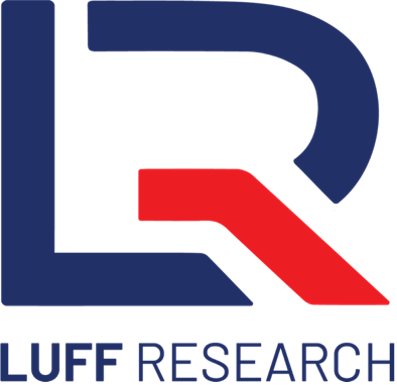Compliance
Quality Assurance
At Luff Research, our focus is on component performance and quality.
Quality is forged into our products by the team of dedicated professionals that perform and monitor all of the design and manufacturing processes. All aspects of design and production are continuously monitored and any identified problem is immediately dealt with.
Our quality control is a self directed system that is modeled on ISO9001 and IPC-A-610E-2010 and is modified to our needs. The following are the foundations of our quality program.
- Quality Control Manual.
- The test equipment we use is of the latest technologies and is fully calibrated.
- Detailed records are kept on all designs and testing.
- All returned units are fully evaluated. The failure is repaired and if needed corrective action is taken. A detailed failure analysis report is issued and the unit is returned in a timely manner.
In the development and manufacture of high performance components all of our efforts aim to produce products that will:
- Meet of exceed all performance requirements.
- Are of the highest quality and reliability.
- Meet cost and delivery targets.
The typical steps in the manufacture of our products are shown below. Our manufacturing cycle employs sophisticated manufacturing techniques, automatic testing, temperature cycling and burn-in before final electrical and ATE testing.
RoHS Compliance
Luff Research provides, when so quoted, frequency source products that are in full compliance with EU Directive RoHS 2002/95/EC. This directive prohibits the use of 6 hazardous substances in electronic equipment, Lead (Pb), Mercury (Hg), Cadmium (Cd), Hexavalent chromium (CR6+), Polybrominated biphenyls (PBB) and Polybrominatied diphenyl ether (PBDE).
In our RoHS compliant products, all components and materials, and the manufacturing techniques employed, are chosen so that the resulting product is fully RoHS compliant.
Conflict Minerals Policy Statement
Luff Research supports ending the violence and human rights violations in the mining of certain minerals from a location described as the “Conflict Region,” which is situated in the eastern portion of the Democratic Republic of the Congo (DRC) and surrounding countries.
The U.S. Securities and Exchange Commission (“SEC”) adopted final rules to implement reporting and disclosure requirements related to “conflict minerals,” as directed by the Dodd-Frank Wall Street Reform and Consumer Protection Act of 2010. The rules require manufacturers who file certain reports with the SEC to disclose whether the products they manufacture or contract to manufacture contain “conflict minerals.” The definition of “conflict minerals” refers to gold, as well as tin, tantalum, and tungsten, the derivatives of cassiterite, columbite-tantalite, and wolframite, regardless of where they are sourced, processed or sold. The U.S. Secretary of State may designate other minerals in the future.
We support these requirements to further the humanitarian goal of ending violent conflict in the Democratic Republic of the Congo (DRC) and in surrounding countries, which has been partially financed by the exploitation and trade of “conflict minerals.”
Our Commitment:
Support the aims and objectives of the U.S. legislation on the supply of “conflict minerals”.
Do not knowingly procure specified metals that originate from facilities in the “Conflict Region” that are not certified as “conflict free”.
If we discover the use of these minerals produced in facilities that are considered to be “non-conflict free”, in any material, parts or components we procure, we will take appropriate actions to transition product to be “conflict free”.
Need more information?
We are always available to discuss our product line as well as your specific requirements.
